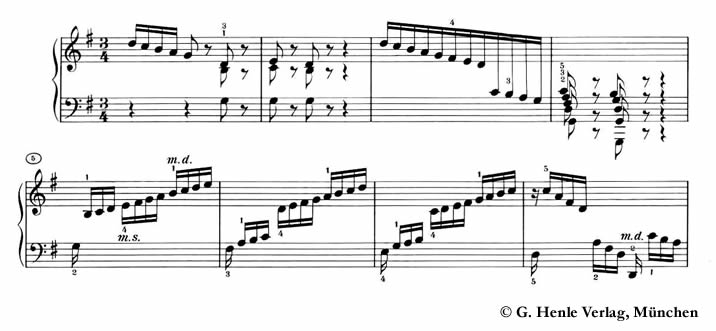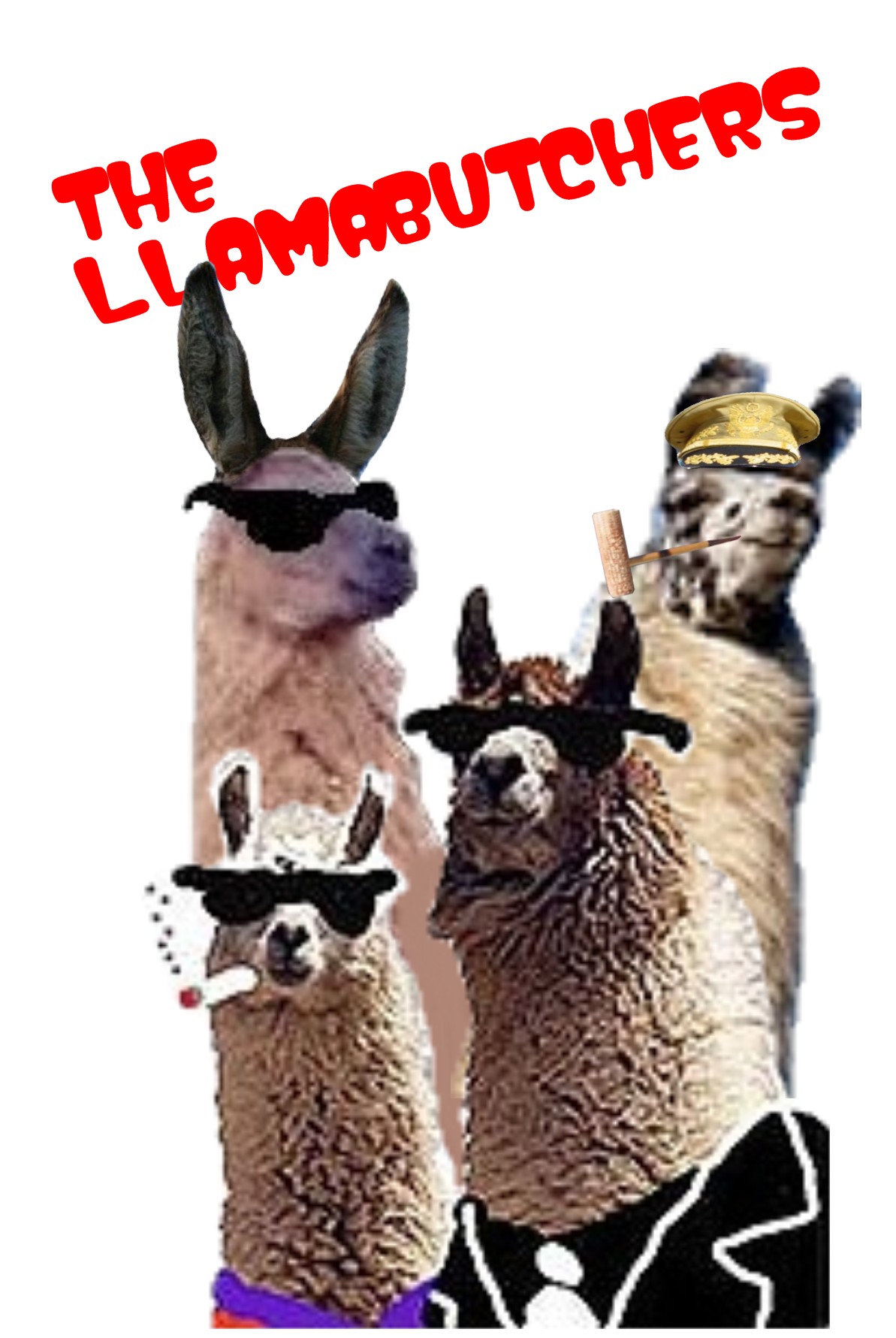October 13, 2006
Gratuitous Musickal Posting (TM)
I really haven't talked about it at all here, but this has been a more than unusually stressful year here at Orgle Manor, what with one thing and another.
It occured to me just recently that although I have managed to keep up my piano playing on a modestly regular basis, ever since this summer I have played almost nothing except the works of J.S. Bach. In particular, I've been concentrating on his keyboard partitas, and even more in particular on Partita No. 1 in B-Flat Major, BWV 825 and Partita No. 5 in G Major, BWV 829. Nothing else seems to do.
Here's a good little description of Bach's partitas from some concert notes about a performance of No. 5:
When Bach moved to Leipzig in 1723, his musical duties changed. For his music-loving prince in Cöthen, Bach had written the great part of his secular instrumental music, but now–as Cantor of the Thomaskirche–he was charged with producing music for religious functions, and the music flowed out of him at a pace that would have exhausted even a Mozart: from the late 1720s came several hundred church cantatas and the St. Matthew Passion. But Bach did not altogether lose interest in instrumental music: he had written the first book of the Well-Tempered Clavier in Cöthen, and now in Leipzig he continued to compose for keyboard.Bach’s set of six partitas, originally written for harpsichord, was composed between 1726 and 1731 and published in the latter year as the first volume of his Clavier-Übung (“Keyboard Practice”); in a wonderful introductory note in the score, the composer described these works as having been “Composed for Music Lovers, to Refresh their Spirits, by Johann Sebastian Bach.” Bach understood the partita to be a suite of dance movements–its name implies a set of “parts”–based on the traditional sequence of allemande-courante-sarabande-gigue. He adopted this tradition but made it his own by supplementing it with three of what he called galanteries: extra movements, somewhat lighter in character and intended to make the work more attractive to listeners. These consisted of an introductory movement (in a different form in each of the six partitas) and two extra dance movements.
The Partita No. 5 in G Major dates from 1730, when Bach was forty-five. The wonderful Preambulum has been likened to a concerto. It features brilliant exchanges between the hands, and all this dashing energy is interrupted by dignified chords that provide moments of repose before the music dashes off again.
Each of the four traditional movements of the partita has a distinct national origin. The Allemande (that name suggests its German ancestry) is a slow dance of serious character, usually in 4/4 time and in binary form. The Courante (French for “running”) is a lively movement, usually in triple time but sometimes mixing different rhythms; this one remains firmly in 3/8. The Sarabande, of Latin American and Spanish heritage, is a stately dance in triple time; this sarabande, in 3/4 meter, makes frequent use of dotted rhythms and grace notes. The concluding Gigue (derived distantly from the Irish jig) dances energetically and features polyphonic entrances and off-the-beat accents.
The interpolated galanteries are first a Tempo di minuetto that belongs mostly to the right hand; its athletic and angular character makes this quick music seem far removed from the minuet of classical form. The second is a Passepied (“pass-foot” in French), a lively dance in triple time, said to be originally a sailors’ dance.
"To refresh their spirits." I think that's it exactly. And by this, the Old Boy didn't just mean making his music lovers feel good. I tell you truly, friends, that there is a transcendant quality to Bach's music that resonates with the very core of the Spirit, touching off faint yet satisfying echoes of that Spirit within the souls of those who play or listen to it. Very satisfying. And truly refreshing. I have never understood those who dismiss Bach's music as too dry and mathematical. To me, it is the closest we are ever likely to come to the Music of the Spheres, or the choiring of the cherubim and the seraphim, and you can't get much more soulful than that.
I particularly love to play the delightful Praeambulum of No. 5 noted above. Here are the opening bars of the dance:

(Image found at Pianopedia.)
Even the name, which to me has connotations of a pre-walk warm up, makes me smile. As you can see, the dance alternates between hand-crossing runs and definitive chords. As it develops, it keeps to this idea but elaborates on it, bursting out in long contrapuntal passages and dramatic pauses. It's playful and musically rigorous at the same time, encapsulating the kind of serious cheerfulness I always associate with Bach.
Here's a snippet, just to give you the flavor. Of course, as a pure sight-reading hack, I can't play it anywhere near as well as this, not even close. That is the price one pays for only being able to get at the keyboard at odd moments. (To paraphrase Oscar Wilde, the trouble with sight-reading is that when one plays well, nobody listens. And when one plays poorly, nobody talks.) Still, I can stumble through well enough to satisfy myself, if nobody else.
UPDATE: As long as I'm at it, here's the Courante from No. 5. I must say that I'm rayther proud of my own phrasing when I play this. Also, here are the Allemande and the Gigue from Partita No. 1. The Allemande is the pure essence of music to me. And I can play the Gigue (the first section, anyway) from memory, complete with hand-crossings.
I also fixed the original snippet link to substitute a clavichord for a piano performance. I play Bach on the piano because I have no choice in the matter. Those who do so even when they have access to harpsichords and the like ought to be the first against the wall when the revolution comes, so far as I'm concerned.
Posted by Robert at October 13, 2006 03:19 PM | TrackBackBeautifully written, and consonant with my own experiences with JSB.
As an organist I have every right to be a purist snob and agree with the last paragraph, but I don't; I have heard many performances of Bach arranged for nontraditional instruments that work. From electric guitar or saxophone, to the [overrated] Glenn Gould piano performances. In each arrangement, the genius of the composition overcomes the limitations of the instrument (so long as performed by a competent musician).
My musical practice has recently been decidedly less celestial but fun: Billy Joel's Scenes From an Italian Restaurant and Sugarloaf's Green Eyed Lady. I need to get some decent keyboard pieces worked up to keep from going crazy in a guitar-centric cover band.
Yes, it's true that JSB's music sounds good performed on everything from original instruments to marimbas. Part of my gripe is that piano performance opens up room for a lot of interpretive mischief. And part of it is pure jealousy of those who have access to harpsichords but don't take advantage of it.
Posted by: Robbo the LB at October 14, 2006 08:33 AMWhat an inspiration you are Robert. As a sometime guitar player, taking classes but not so disciplined with the study, I should take a page from your book and apply myself.
Not that I'm aiming for anything as highbrow as Bach.
A tip o'the tea cup to you!
Posted by: keysunset at October 14, 2006 04:27 PM

 Image courtesy of the lovely and talented
Image courtesy of the lovely and talented 